At the start of the 2022/23 EFL Championship season, many had Norwich City and Sheffield United amongst the favourites for the title, and with it, promotion to the promised land that is the Premier League. Both sides have enjoyed a fairly strong start that suggests they will be in the mix come matchday 46, with the Canaries currently sitting in seventh on 25 points, and the Blades in 5th on 26 points – current league leaders QPR currently have 30 points.
Sheffield United enjoyed an impressive start to the campaign, immediately putting themselves in the title picture, but they have since experienced a dip in form – they are without a win in six games. Norwich have also had a tough time lately, winning just once in their last six fixtures: the fact that both sides are still knocking on the door at the top end of the table tells you how well they started.
This tactical analysis will provide an insight into how this 2-2 draw played out – the tactics that followed Norwich’s early 2-0 lead, alongside an analysis of the way Sheffield United got themselves back into the game to snatch a point – from their pressing to their wide play.
Lineups
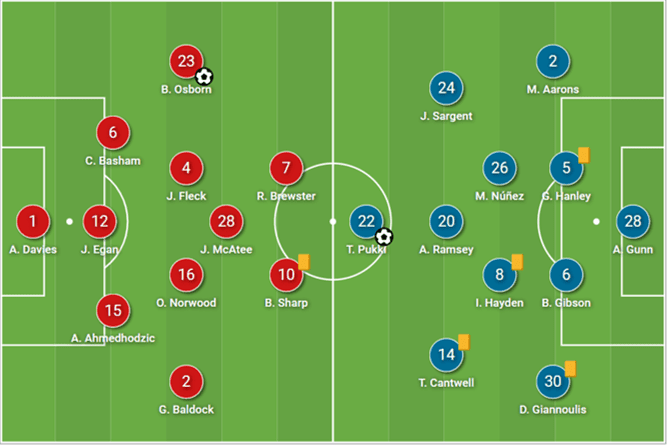
Paul Heckingbottom looked to turn his team’s fortunes around, making four changes from the defeat to Coventry City. A shape of 3-5-2 sees the familiar back three of Chris Basham, John Egan, and Anel Ahmedhodžić, while Ben Osborn returned to the left flank after playing a central role in their previous game. John Fleck came back into the fold in a central midfield role, with James McAtee operating as an attacking midfielder. Former Liverpool player Rhian Brewster started in a striker partnership with club legend Billy Sharp.
City manager Dean Smith opted for a 4-2-3-1, making several changes to the lineup from the defeat to Luton Town last time out. Angus Gunn kept his place between the sticks, with Dimitris Giannoulis coming in at left-back – this is the only change at the back from the previous match at Luton. In midfield, Aaron Ramsey (not to be mistaken for the experienced ex-Arsenal man) was joined by Isaac Hayden and Marcelino Núñez, with Todd Cantwell and Josh Sargent operating on the flanks.
Sheffield United’s wing play
Despite being in the middle of some difficult form, Heckingbottom’s Blades are still one of the highest-scoring sides in the Championship, having managed to sand off some edges in their approach play. They took some time to reach those same heights in this fixture – the analysis below takes a look at the tactics they deployed and how they grew into the game.
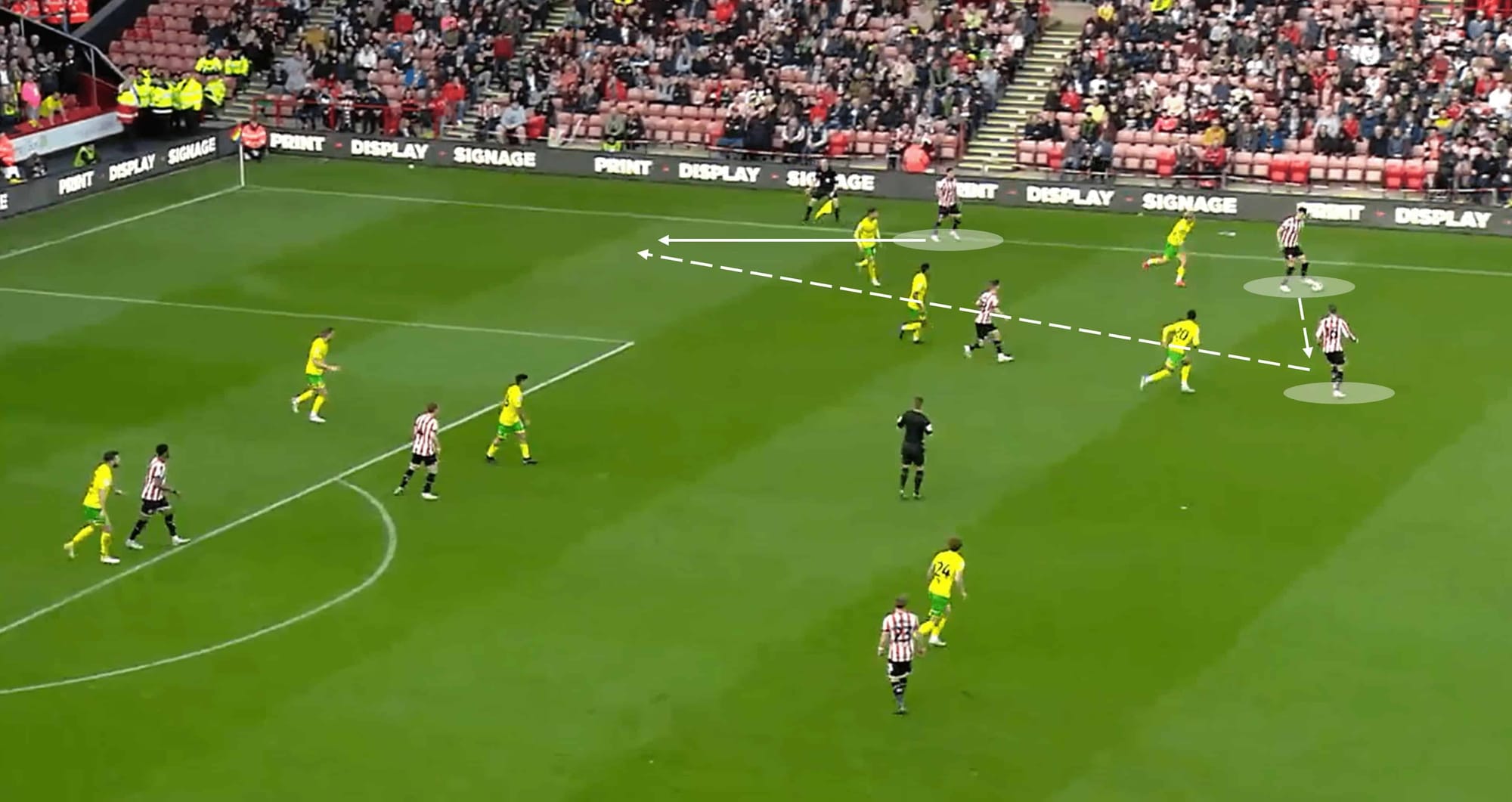
Sheffield United’s tendency to target the flanks was once again visible in this fixture, with a mixture of intricate build-up play and some direct play that was not so easy on the eye: this first example falls into the first category.
We can already gauge their confidence and attacking intent by the number of players in the final third, and with four of them in a wide area, their emphasis is clear. The pass is played into Oliver Norwood who plays a clever first-time swinging pass into the channel behind the Norwich full-back, meeting the run of the Blades’ George Baldock.
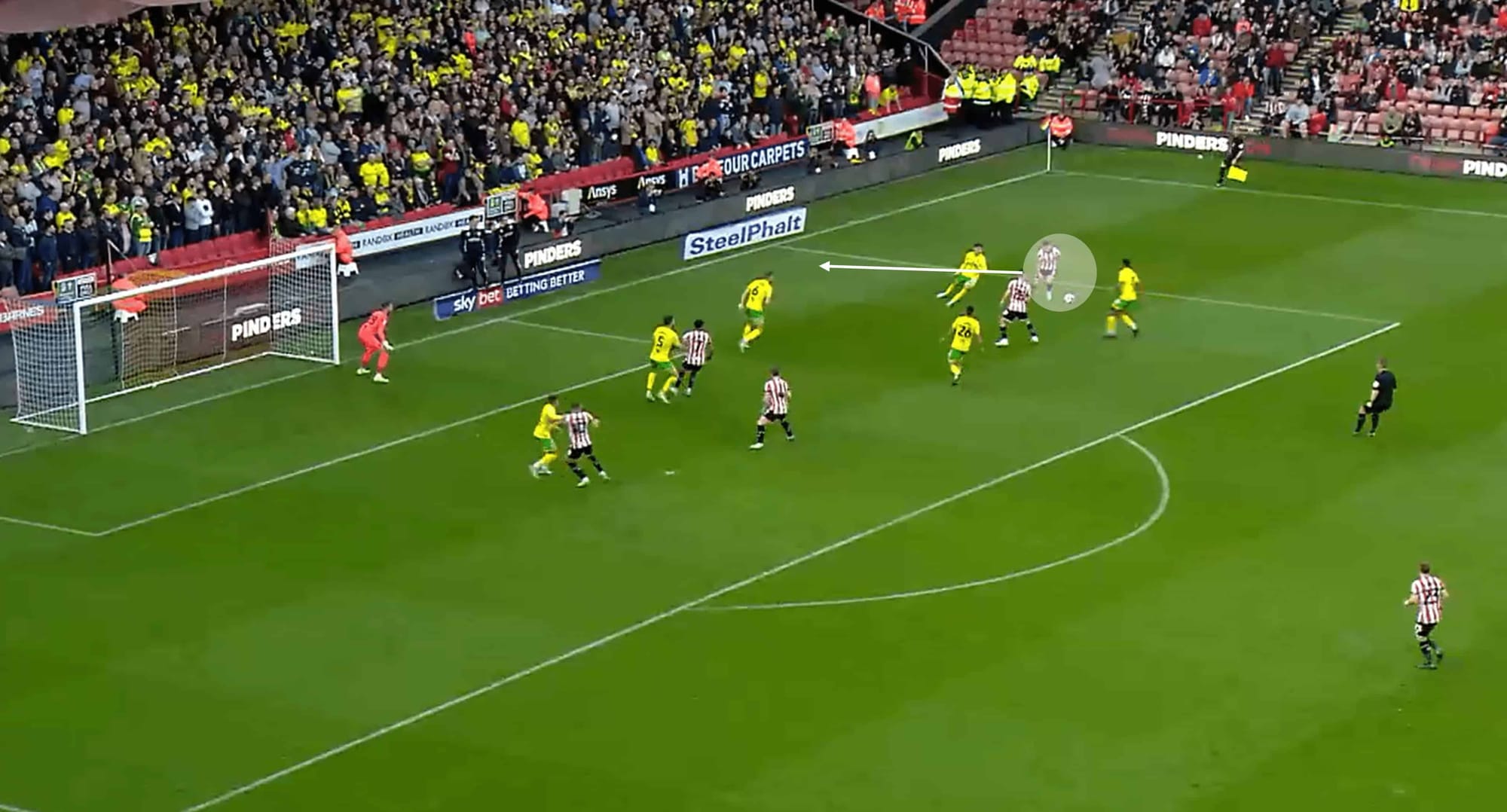
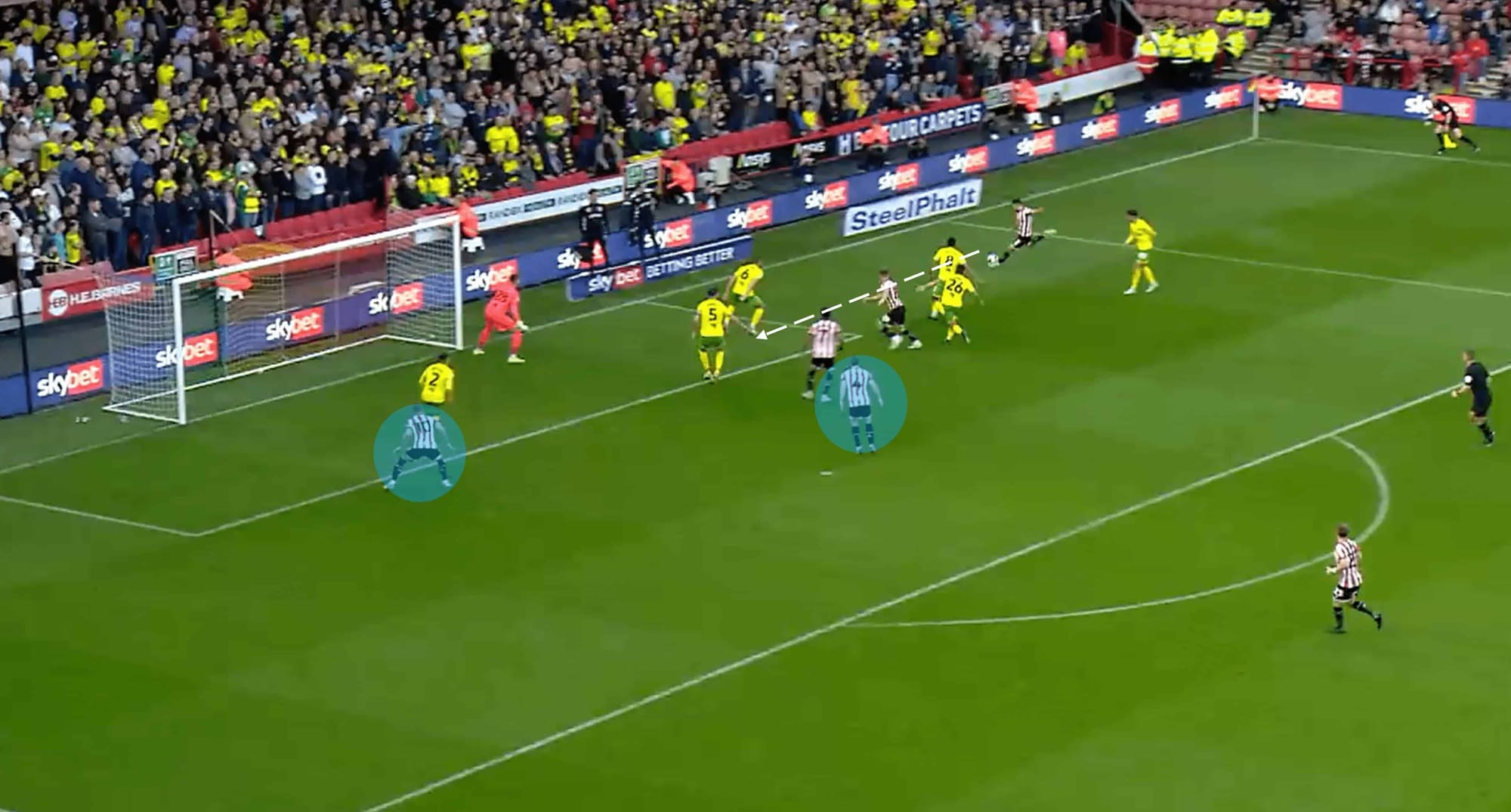
From here, we see an attack that holds immense promise in terms of a potential Sheffield United goal, but individual quality diminished that potential. While Baldock did well to bring the ball under his control before taking on the Norwich defender to get past him and towards the byline, he didn’t once get his head up to see where his cross should be aimed. Instead, he went for the classic “hit and hope”, attempting to hit the ball across the six-yard box with power.
Two potential options that could have been more fruitful are the two highlighted options in the second image. Both are in dangerous positions – Fleck (right side) is unmarked in a central position, while Sharp (left side) is located towards the back post, marked but not tightly so he would fancy his chances in an aerial duel there.
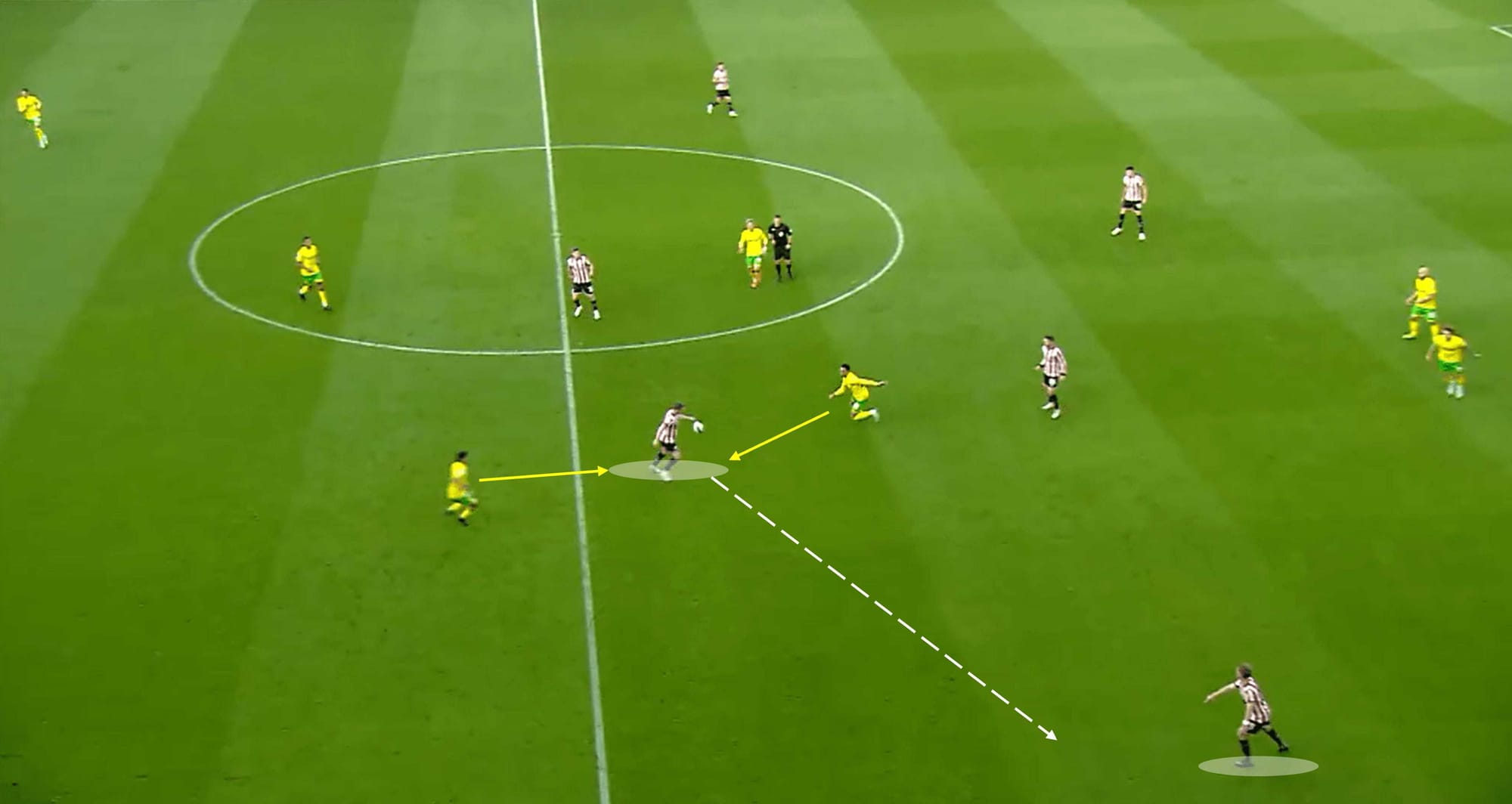
With the pressure on in central midfield, the ball is played into left wing-back Osborn, and here is where we see Sheffield United fall short in their tactics in possession. While the pass into Osborn is clever and timed well, it also puts the left-wing-back into good space with the possibility of progressing the possession into an attack.
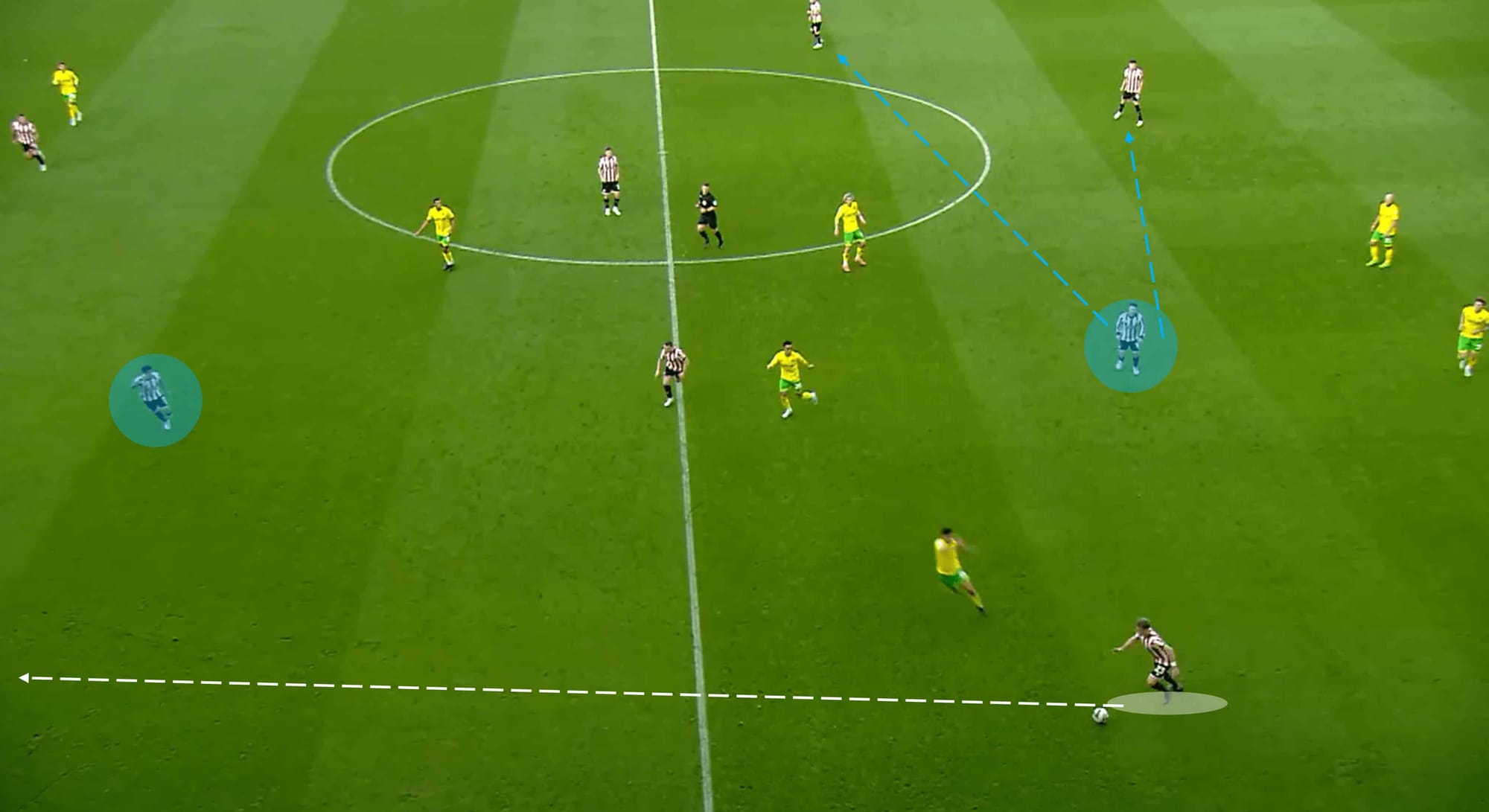
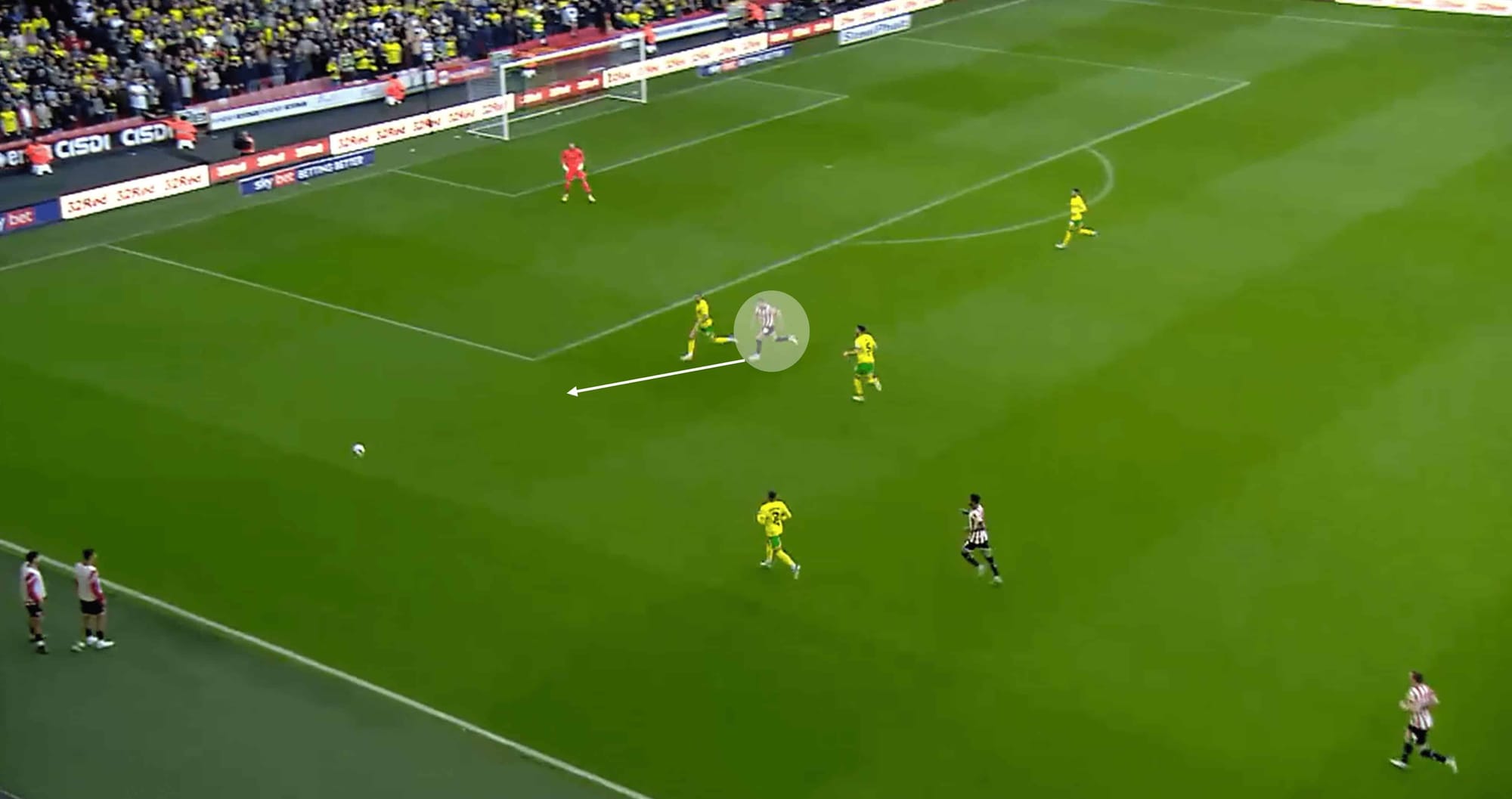
As highlighted by the blue marks, there were two immediate options available to Osborn that held the potential in taking possession through other routes, rather than route one. Fleck is the deeper option in midfield, and while this would have been a pass in a slightly backwards direction, the midfielder would’ve had the option to then send the ball to one of the two highlighted options. The second option was Brewster, who was in deeper than his strike partner Billy Sharp – he could’ve received the ball in good space just outside the attacking third.
Instead, Osborn opted for a seemingly wasteful ball in launching a pass into the channel for Sharp to chase down. While this option offered very little creativity, it did win his side a throw-in in the final third – maybe this was part of United’s tactics in this tie, to get the ball forward as quickly as possible rather than play through the thirds.
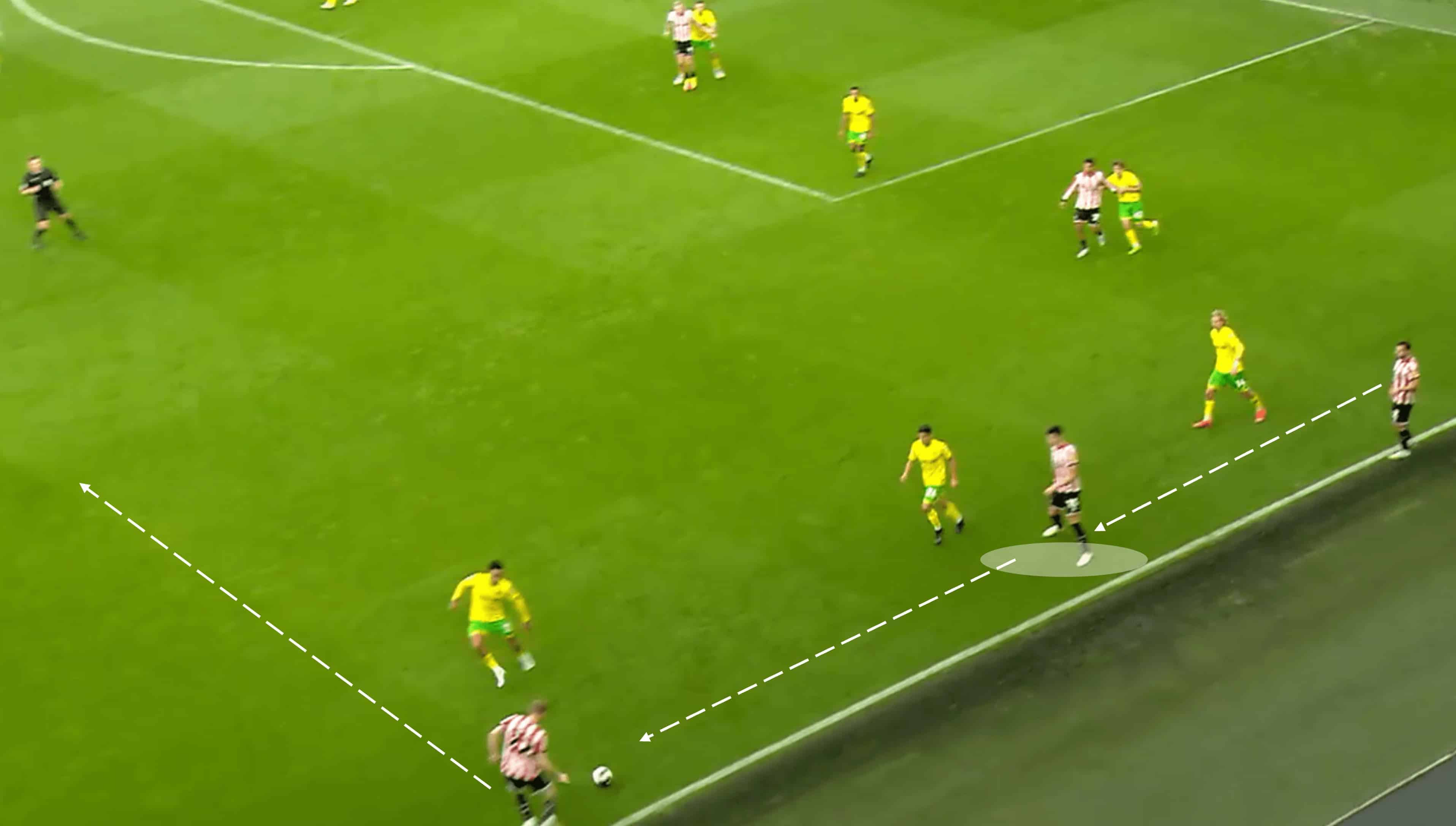
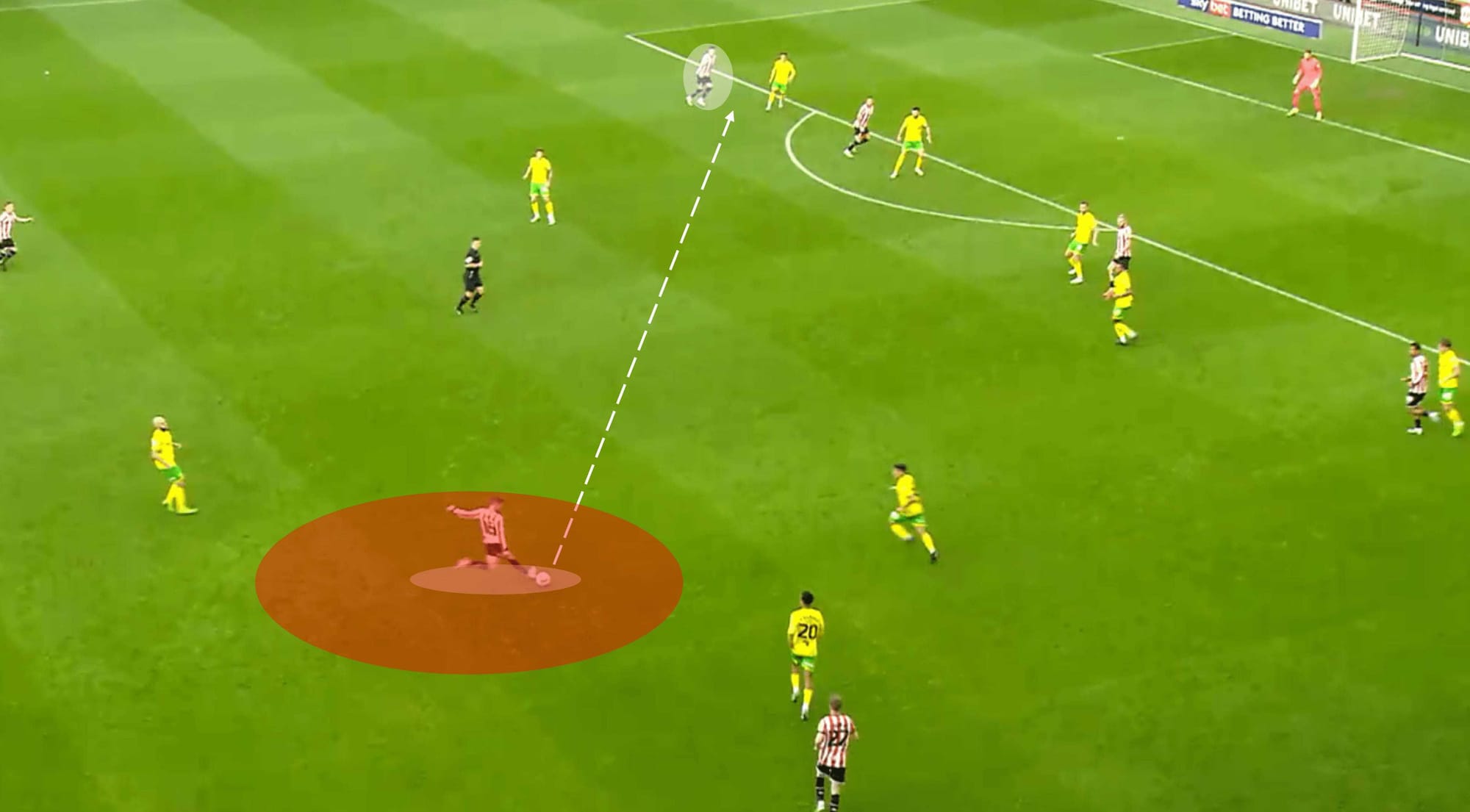
This next analysis has examples of both wide play and direct play from the hosts, and it resulted in the goal that brought them level. With a throw-in on the right flank, Sheffield United’s presence on that side suckered a couple of Norwich’s midfielders out wide to combat that presence. United were quick to recognise this, and the ball made its way to Norwood in a central position, completely unmarked.
Instead of driving forward, he lofted a ball towards the far side of the box – a clever move when you see that the hosts have four players lined up along the edge of the box. Norwood’s passing ability comes in extremely handy when deploying these kinds of tactics, as we see from the finale of this attack below.
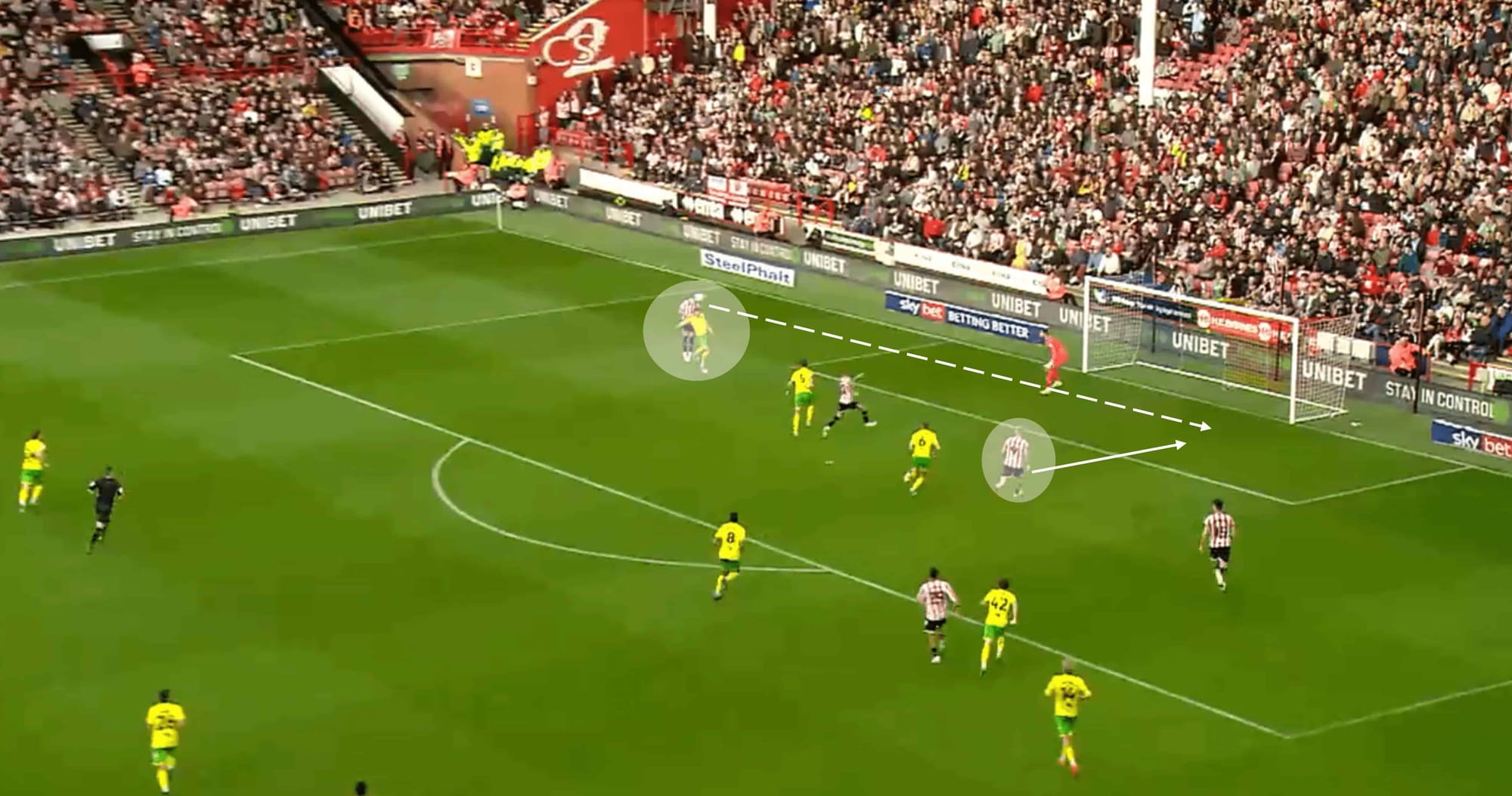
The man at the far post was able to rise high and win his header and did well to get sufficient power on it to send it across the Norwich back-line, who were slow to react. Especially slow to react was the man marking Oli McBurnie – the Scotsman was free to scramble the ball in at the far post to seal the goal. It was somewhat surprising to see Norwich fail to learn and adapt to combat their counterparts’ direct play.
Sheffield United off the ball
Similar to their attacking tactics, United look to be quick and aggressive out of possession too. Showing respect but no fear, they deployed a high press against the Canaries but also remained organised when they were forced back to a deeper, more defensive approach.
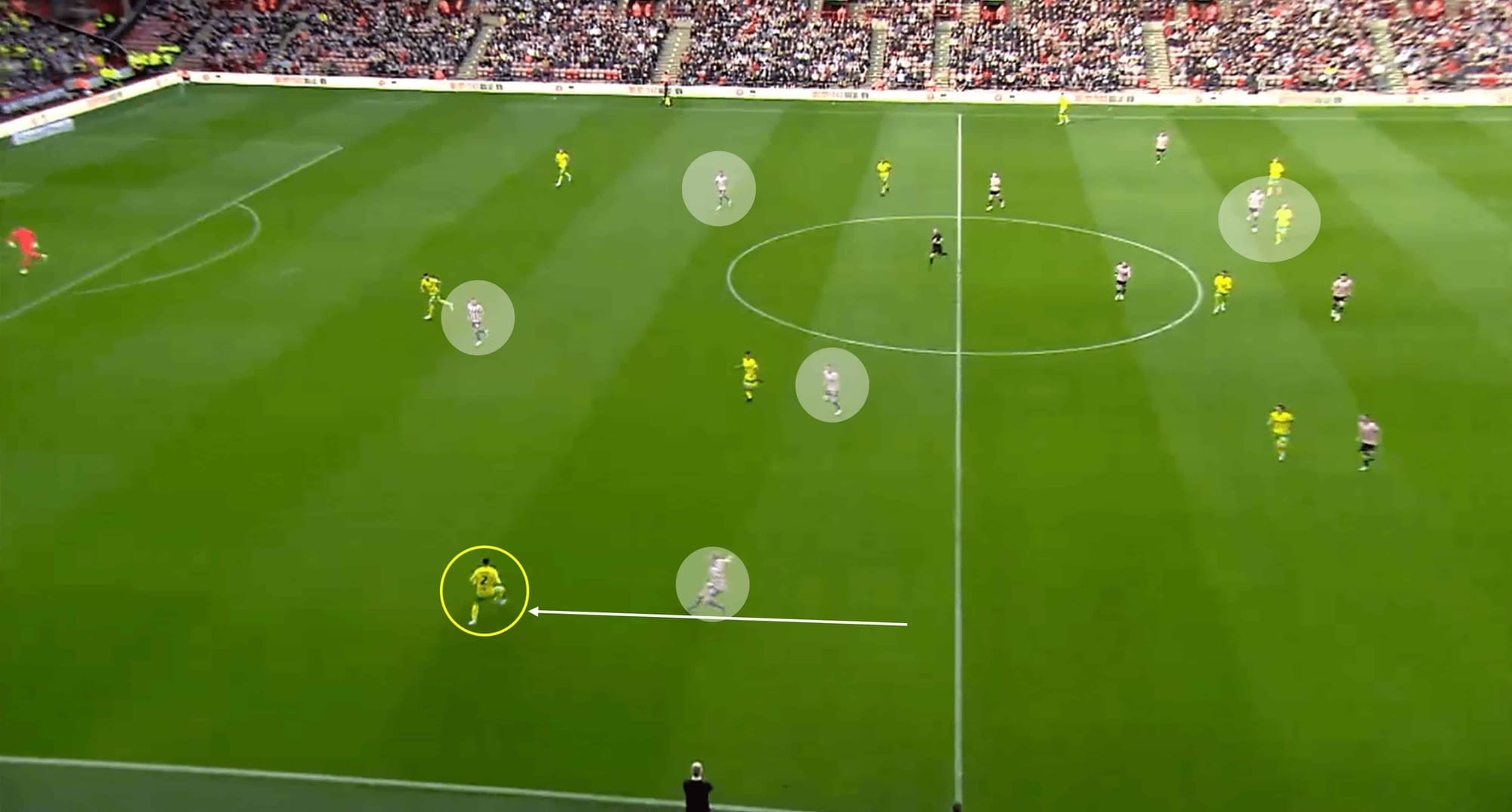
Sheffield United have always been a side to try and play with their hearts on their sleeve, not one to hide from a challenge and rarely one to sit deep and soak up pressure, especially at home. From the first minute in this tie, their intentions out of possession were clear – press Norwich and give them no time to formulate any positive possession. However, the analysis we see above does not give an example of a well-executed press.
While there are the foundations of a good press – a good presence high up the pitch with nearby options marked, Ben Osborn was simply too slow in getting to the Norwich right-back Max Aarons, and his attempted challenge that followed was too slow and weak to stop Aarons from sending a lofted ball into Pukki, who bullied the Blades defender to collect the ball and go through to double his team’s lead.
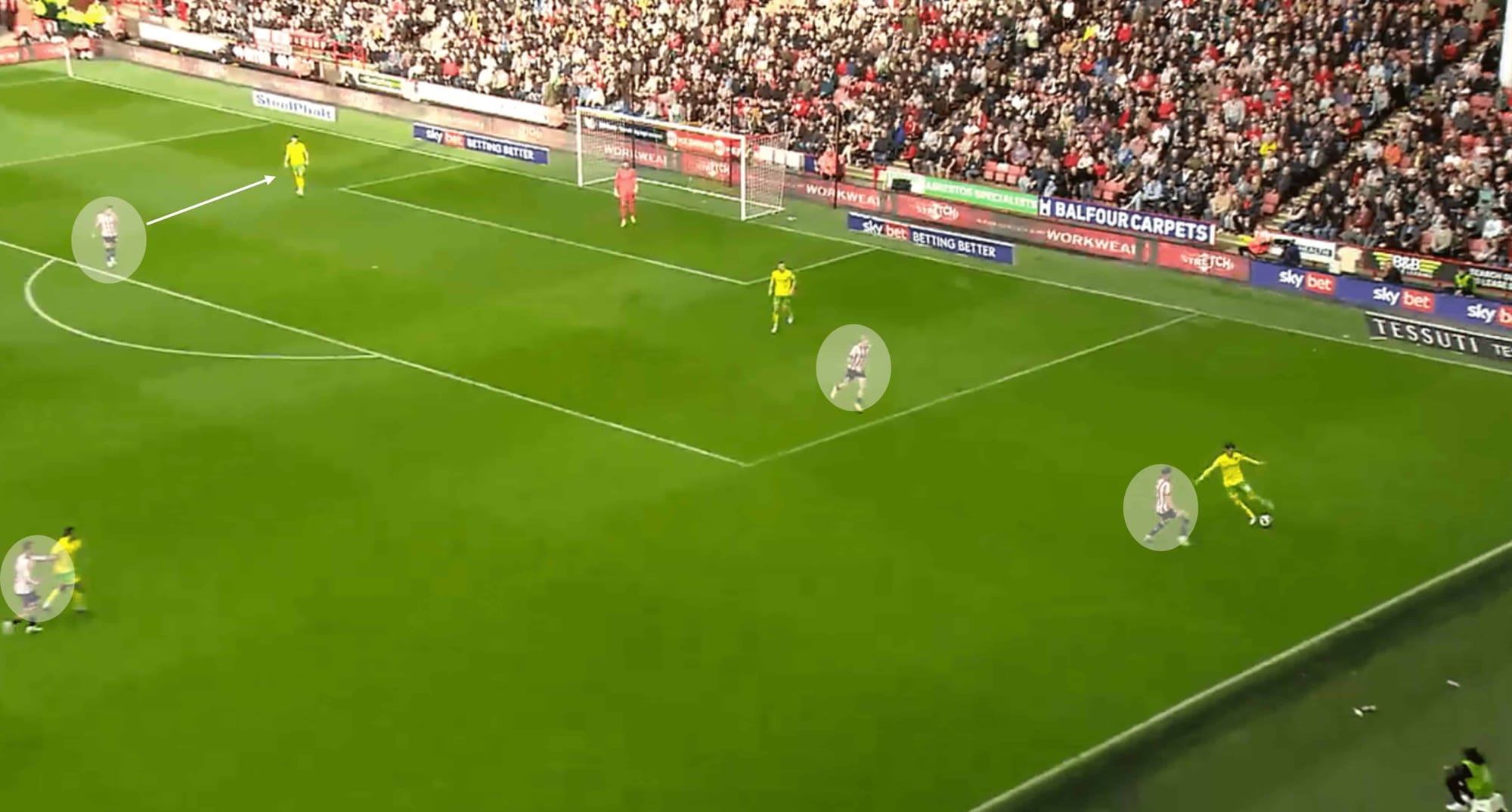
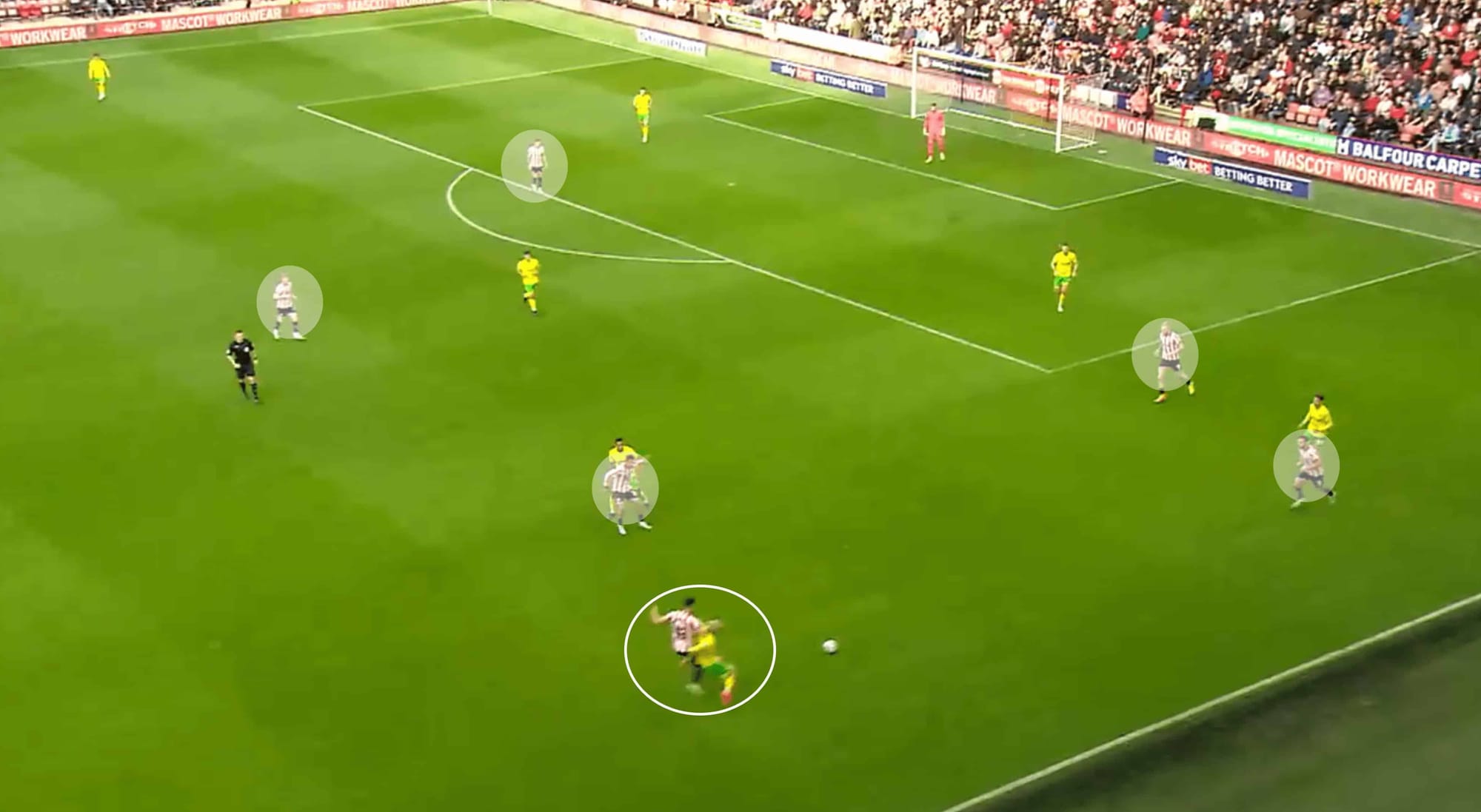
Here we see a better example of a high press from Sheffield United, which occurred in the second half. Again, they got the foundations right, with an even higher presence than the first example. But the key factor that was better this time around was the pressure on the actual man on the ball – Baldock gave his man no time to receive the ball and nicked it from under his feet.
Unfortunately, we saw the quality of EFL referees come into question once again as the official deemed Baldock’s challenge as a foul. Nevertheless, on face value alone, on another day, this press would have been a highly successful one for Heckingbottom’s side and could have even led to a dangerous chance on goal.
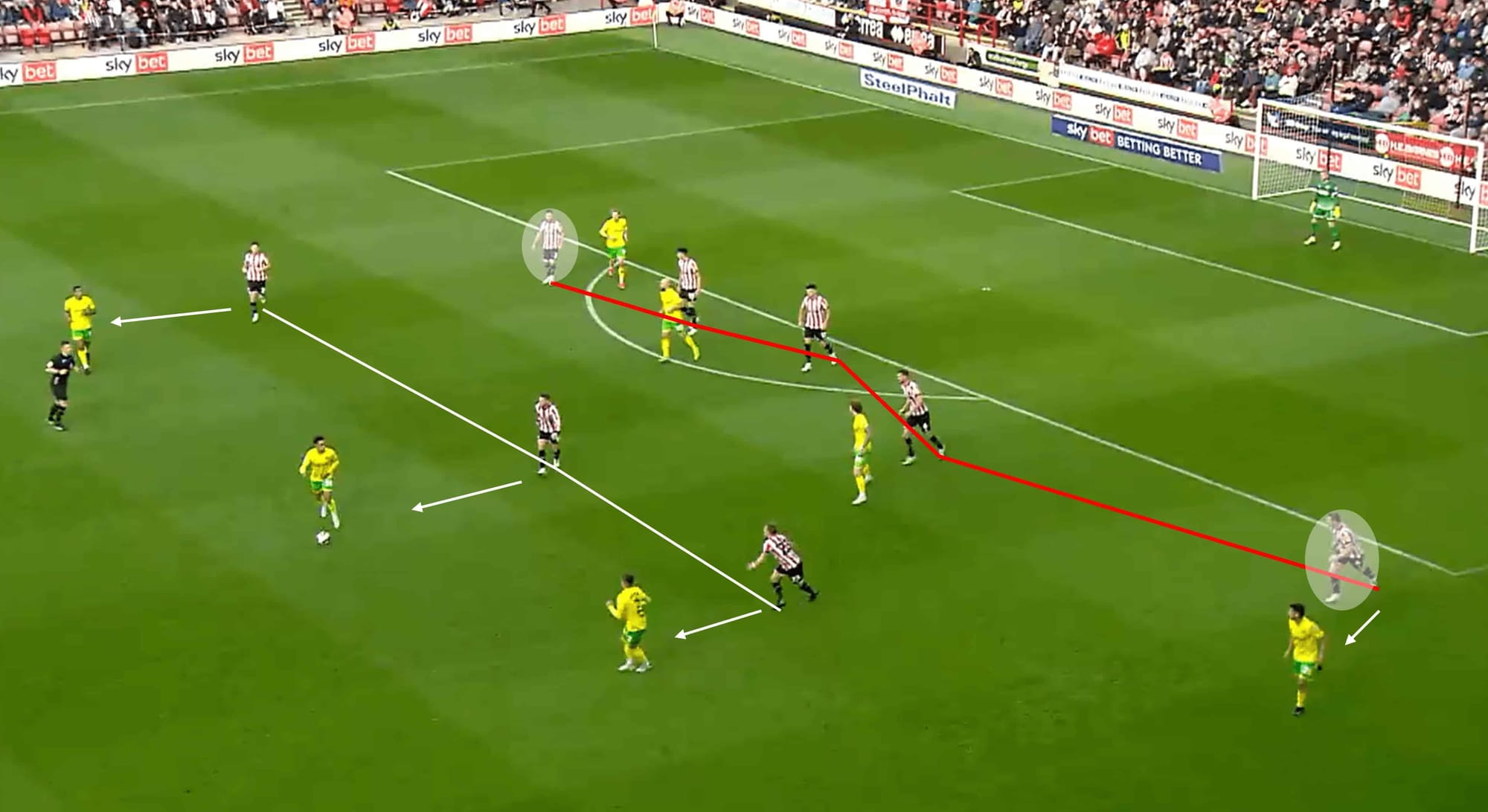
It wasn’t all high energy and pressing at 100mph from the hosts, however. They were also required to show defensive organisation with a solid shape to keep the Canaries out in moments of sustained possession and pressure.
The example above shows us a typical United setup in these scenarios. The wing-backs would drop and tuck in to act as defensive full-backs, which allows the back three to be compact and block out any central space. The midfield unit was responsible for applying pressure and looking to dictate where Norwich played the ball before looking to intercept.
Pukki’s presence in Norwich attack
Finnish striker Teemu Pukki has been a handful for opposition defenders for some time now, and his contribution of six goals and three assists in 15 games this season is a good reflection of his impact thus far in Norwich’s bid to return to the top flight. As the analysis below will show, Pukki compliments Norwich’s tactics in more areas than simply being the goalscorer.
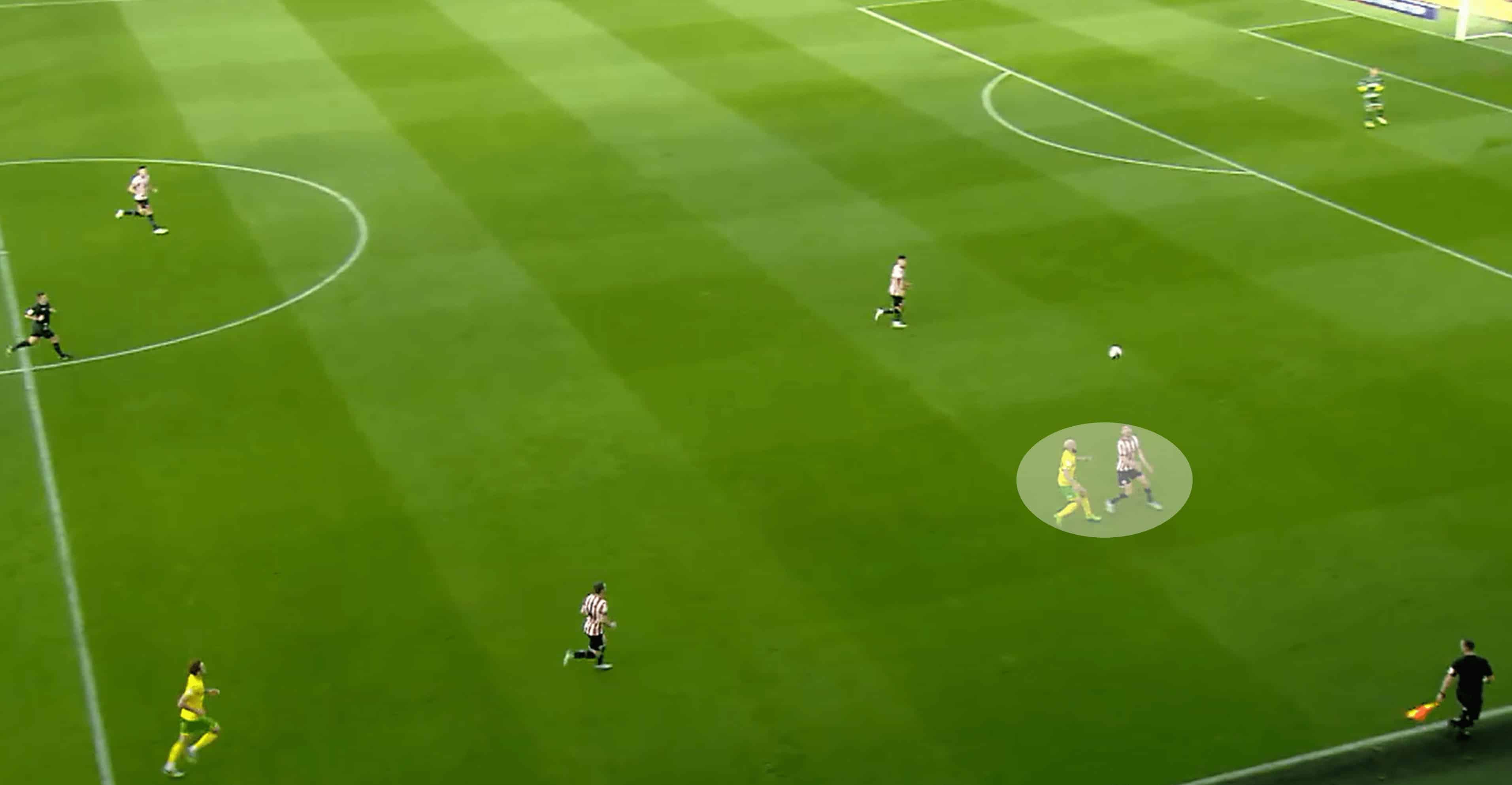
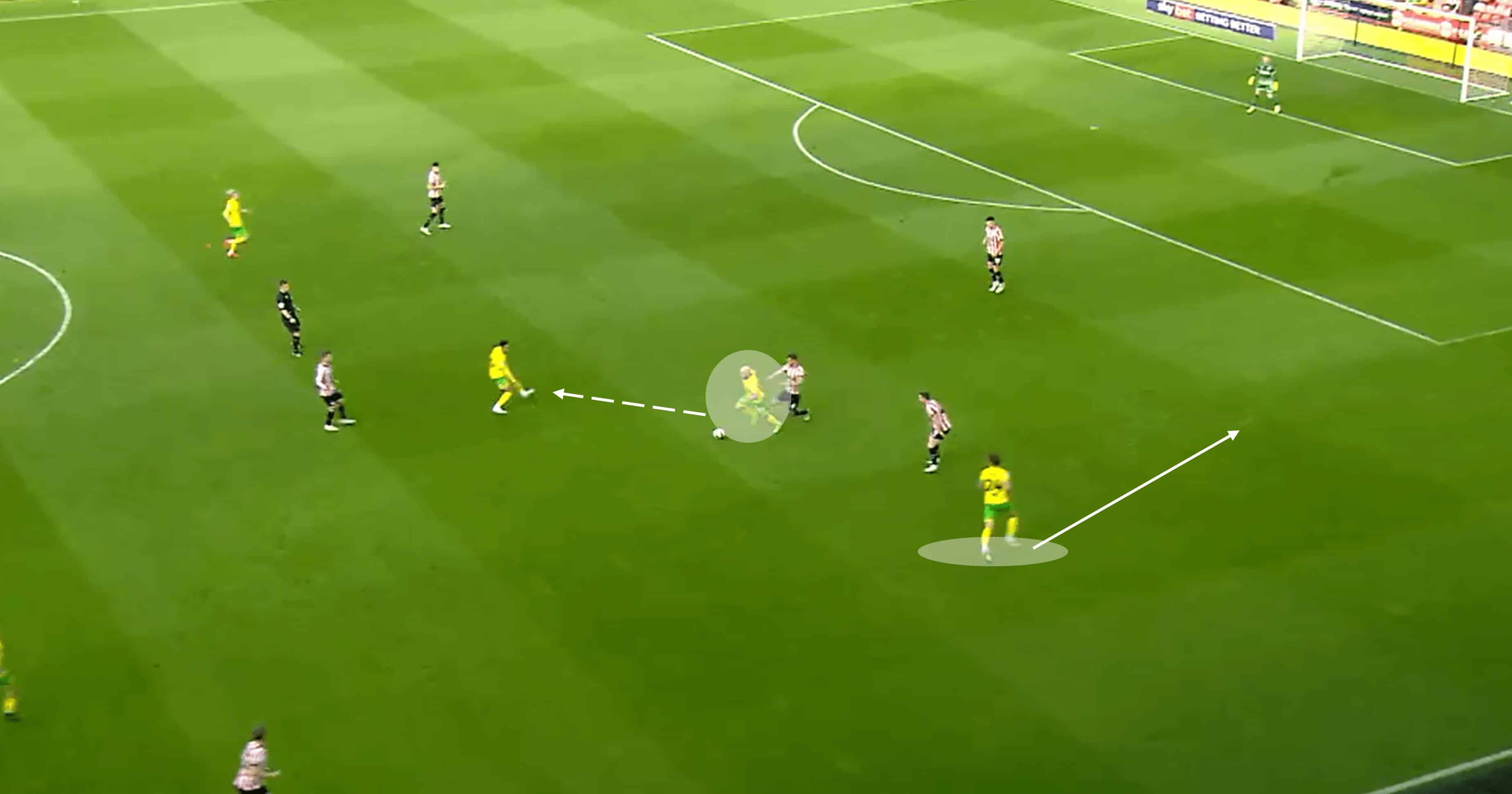
Pukki only stands at 5”9” but applies himself the way a man north of 6” would. His aggression and constant hassling of defenders make him extremely difficult to contain, and on more than one occasion he bullied a United defender in an aerial duel, as we saw earlier in this analysis report.
In this example, he again uses the United CB’s poor judgement of the ball to his advantage, utilising his strength to steal the ball away from his opponent, and turning cleverly away from an oncoming Blade. Showing good awareness, he then releases the ball into his midfield teammate Ramsey, who has dangerous space ahead. It is at this time that right-winger Josh Sargent begins his run into the space on his flank.
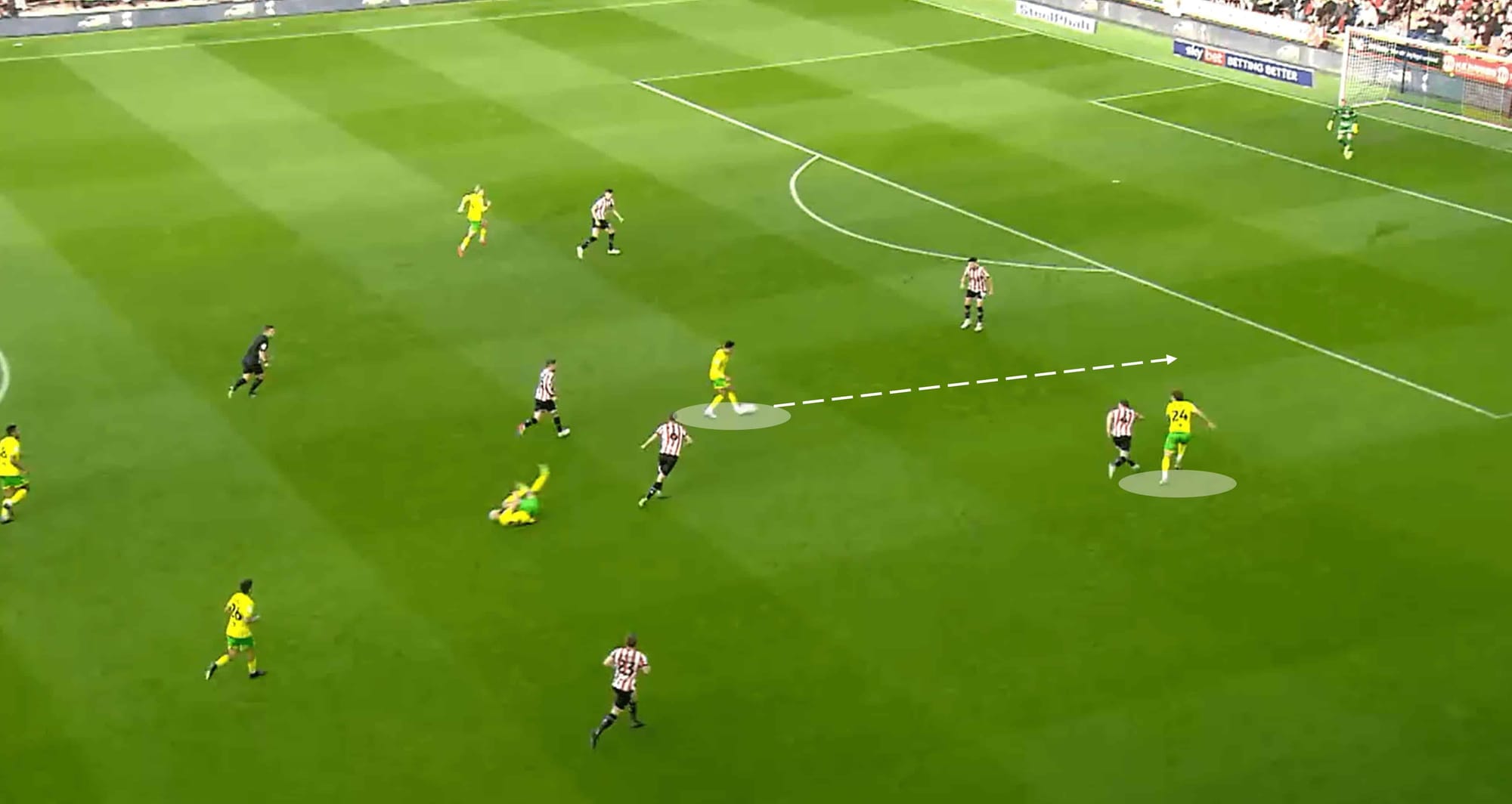
Ramsey shows good awareness and vision to play Sargent in after making good progress through running with the ball. The weight of his pass was a decent one that gave Sargent a good chance on goal. This all came from Pukki’s determination to win a ball that looked certain to belong to Sheffield United, and as we can see from the visual below, his work off the ball is very important to his side.
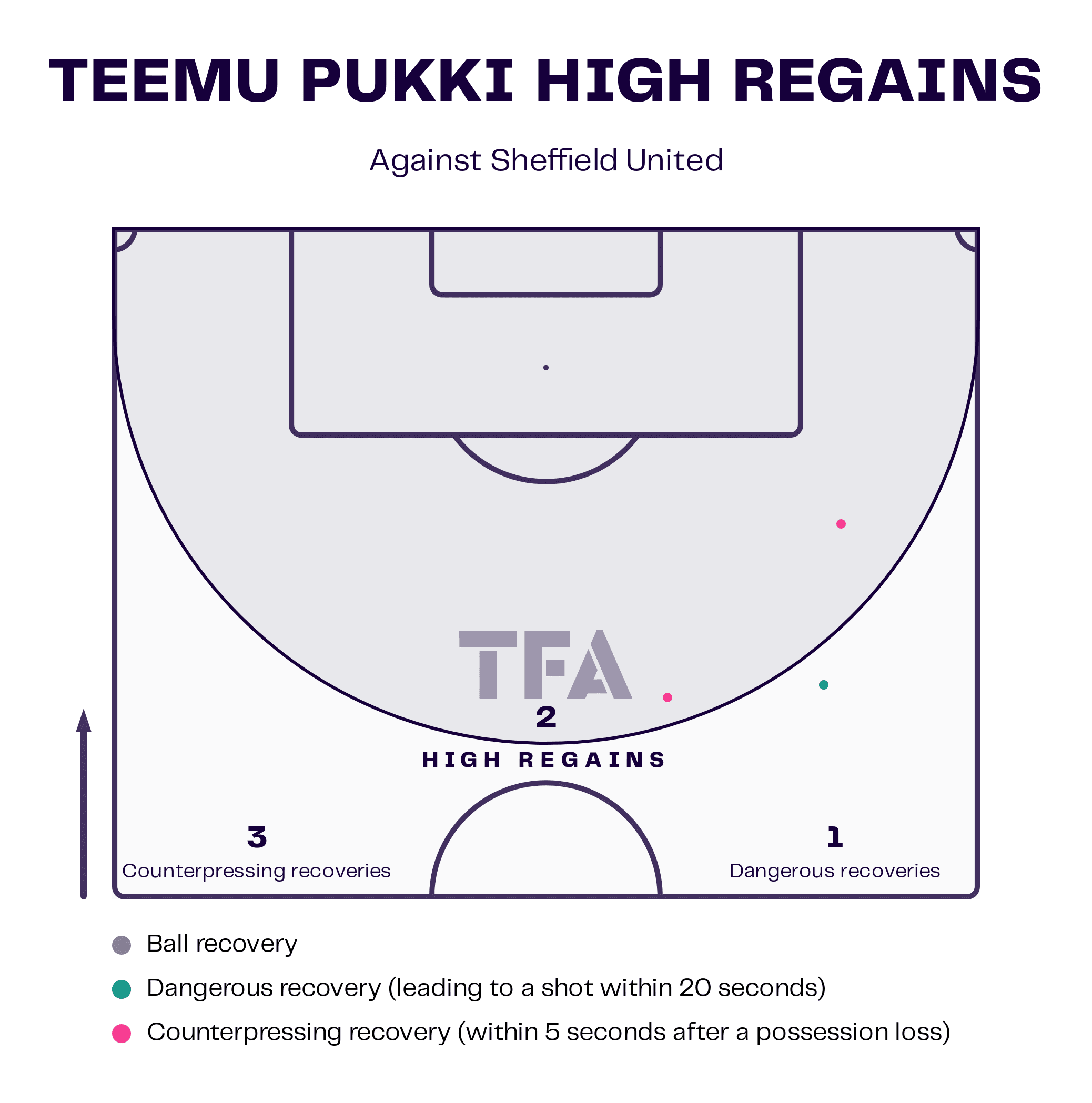
With three counter-pressing recoveries during the match, he displayed real determination in winning the ball back quickly after a turnover. Meanwhile, his two high regains, and one dangerous recovery also provided important moments in the match, and it was his work in these types of areas that were so difficult for Sheffield United to handle.
Conclusion
Considering the performances of both clubs in both halves, a draw is probably a fair result, despite a late penalty miss from Pukki. Norwich reacted better to most situations in the first half while Sheffield United struggled to really get going. Minor tweaks here and there but overall, the same system just with more belief and awareness in the second from Heckingbottom’s men provided the catalyst for the comeback, and they even had chances to snatch a winner.

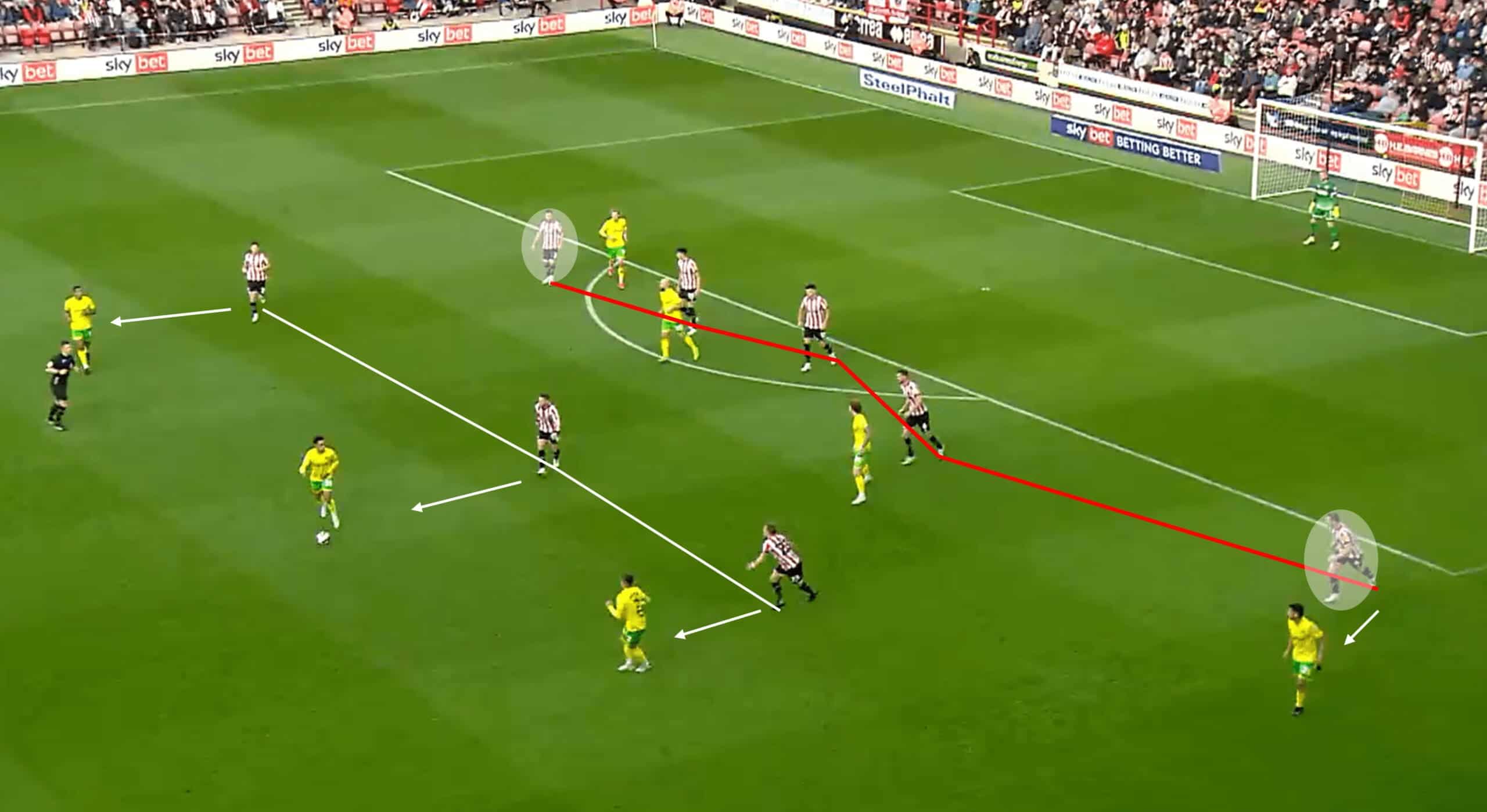




Comments